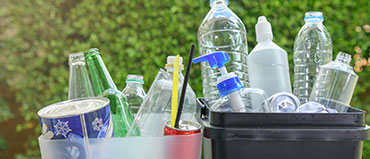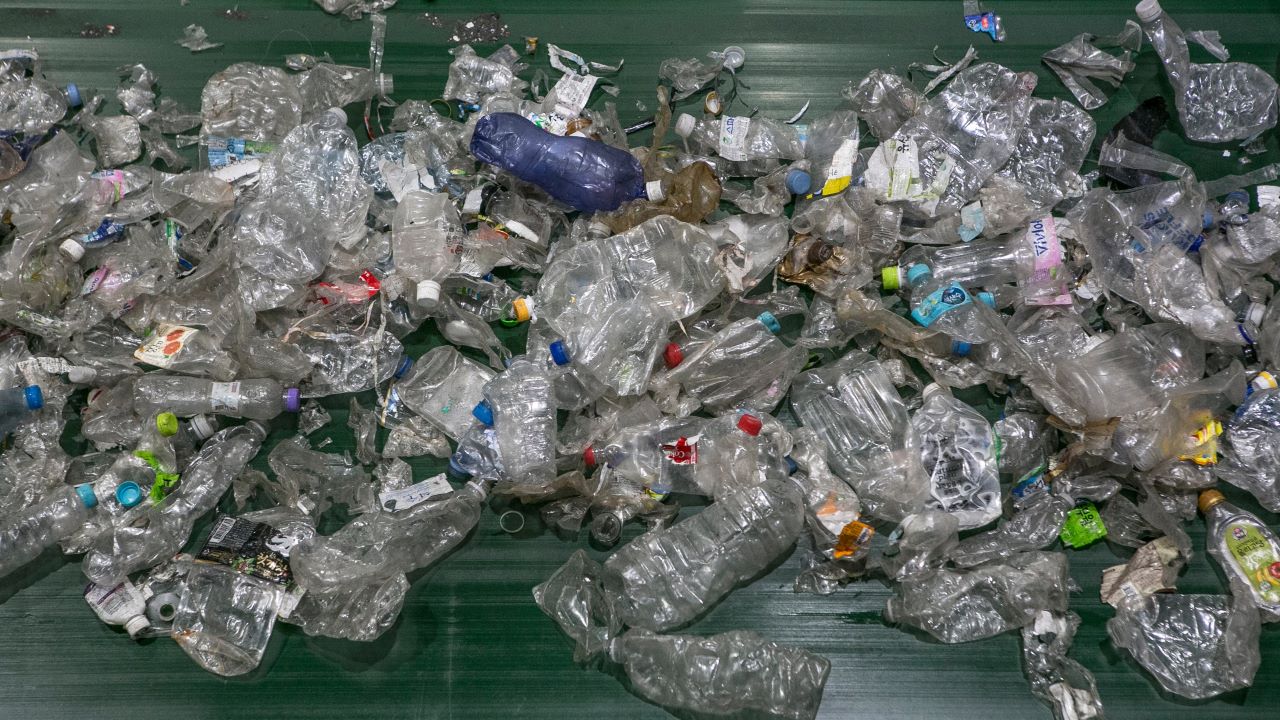Rising Demand for Sustainable Packaging Solutions
In recent years, the world has witnessed an unprecedented transformation in the way industries approach packaging. With environmental consciousness on the rise and global governments enforcing stricter sustainability standards, the recycled polyethylene terephthalate (rPET) packaging market is entering its golden era. From bottles and containers to textile fibers and food-grade packaging, rPET has become a crucial part of the circular economy. Industry experts predict that by 2035, the global rPET packaging market will experience record growth, driven largely by strong performance in the Asia-Pacific (APAC) region, along with major contributions from the United States and Saudi Arabia.
The movement toward rPET is more than just a trend it represents a global shift in mindset. As consumers become more eco-aware, brands are compelled to adopt sustainable packaging solutions that align with both environmental and corporate responsibility goals. Recycled PET packaging, made from post-consumer plastic waste, offers a practical answer to the plastic pollution crisis while maintaining product integrity, safety, and design flexibility.
APAC Emerges as a Global Leader in rPET Expansion
The Asia-Pacific region has rapidly established itself as the powerhouse of rPET packaging growth. Countries such as China, Japan, India, and South Korea have made significant progress in recycling infrastructure and innovation, turning waste management into a thriving business ecosystem. The APAC market benefits from a strong combination of high plastic consumption rates, evolving waste management systems, and increasing government intervention to reduce landfill waste.
China, despite facing challenges in the past due to waste import restrictions, has developed one of the most advanced recycling frameworks in the world. Japan’s meticulous recycling culture and South Korea’s technology-driven waste systems further enhance regional efficiency. Meanwhile, India’s private sector has become a key player in driving rPET initiatives, with both multinational corporations and local startups investing heavily in advanced recycling facilities and collection networks.
Furthermore, Southeast Asian nations such as Thailand, Malaysia, and Indonesia are rapidly catching up, implementing extended producer responsibility (EPR) regulations and investing in bottle-to-bottle recycling technologies. With massive populations and growing middle classes, these countries represent a huge consumer base demanding eco-friendly packaging alternatives. By 2035, APAC’s contribution is expected to dominate the global rPET landscape, both in terms of production and consumption.
The United States: Corporate Leadership and Innovation Driving the Market
The United States remains a critical force in shaping the global rPET packaging market. American brands and corporations have made major commitments toward achieving zero-waste and carbon-neutral goals, driving demand for recycled materials across various industries. From beverages to cosmetics, rPET packaging has become a symbol of corporate environmental responsibility.
Major beverage manufacturers are leading the way, replacing traditional PET bottles with 100% rPET alternatives to meet sustainability pledges. Retailers are also responding to consumer preferences by introducing more recyclable and refillable packaging. The U.S. government’s focus on reducing single-use plastics, along with state-level policies promoting circular economy principles, is propelling industry-wide transformation.
Technological innovation is another hallmark of the U.S. market. Advanced recycling technologies such as chemical depolymerization are gaining traction, allowing PET waste to be broken down and repurposed at a molecular level. This method ensures that recycled plastic maintains high quality and purity, suitable even for food-grade packaging. These advancements are positioning the U.S. as a global hub for sustainable material innovation.

Saudi Arabia’s Bold Sustainability Vision
Saudi Arabia’s contribution to the rPET packaging market reflects a broader national vision centered on sustainability and diversification. Under the framework of Vision 2030, the Kingdom has committed to reducing its environmental footprint and developing a circular economy that prioritizes recycling and renewable energy.
The government has introduced initiatives to boost domestic recycling industries and attract foreign investment in sustainable manufacturing. Public and private partnerships are flourishing, creating new opportunities in waste management and rPET production. As part of its green transformation, Saudi Arabia aims to recycle a significant portion of its municipal waste by 2035, and recycled PET packaging plays an essential role in achieving this milestone.
Saudi companies are increasingly adopting sustainable packaging practices across sectors including beverages, personal care, and food. International collaborations with global recycling leaders are also strengthening local expertise, enabling the nation to build a competitive recycling infrastructure. With its ambitious environmental goals and economic diversification strategy, Saudi Arabia is emerging as one of the Middle East’s most dynamic players in the recycled packaging space.
Growing Global Investments in Circular Economy Initiatives
Across continents, investment in the circular economy is gaining momentum. Governments, investors, and corporations are recognizing the economic and environmental benefits of recycling-based industries. The recycled PET packaging market, in particular, offers a lucrative opportunity for both sustainability-driven investors and traditional manufacturers seeking to align with global environmental trends.
Large-scale investments are being funneled into advanced recycling plants, automation systems, and artificial intelligence technologies that can improve sorting accuracy and material recovery rates. Financial institutions are also supporting green initiatives through sustainability-linked bonds and investment funds targeting environmentally responsible projects. This synergy between public and private sectors ensures that recycled PET packaging will continue to grow as both a business opportunity and an environmental solution.
The circular economy model encourages resource efficiency and waste reduction—values that align perfectly with global efforts to combat climate change. By 2035, experts anticipate that circular packaging could become the dominant paradigm in consumer goods industries, with rPET at its core.
Innovation Reshaping the Packaging Industry
Innovation is driving the next wave of growth in the rPET packaging market. As the demand for sustainable materials increases, companies are developing creative solutions that combine environmental responsibility with aesthetic appeal and performance.
Emerging technologies such as digital watermarking, smart sorting systems, and blockchain traceability are improving the transparency and efficiency of recycling operations. Chemical recycling is becoming more commercially viable, enabling infinite recyclability without compromising quality. Lightweight designs and hybrid packaging materials that combine recycled plastic with biodegradable components are also entering the market, offering consumers more sustainable options.
Design innovation plays a vital role as well. Brands are investing in sleek, modern, and customizable rPET packaging to attract eco-conscious consumers without sacrificing visual appeal. The fusion of sustainability and design excellence is redefining brand identity in the global market.

Consumer Awareness and Changing Market Dynamics
One of the most significant factors fueling the growth of rPET packaging is the rise in consumer awareness. Modern consumers are more informed and selective about their purchasing decisions, preferring brands that align with their environmental values. Social media movements, sustainability campaigns, and eco-label certifications have amplified this awareness, pushing companies to act responsibly.
The younger generation, particularly Millennials and Gen Z, are at the forefront of this change. Their preference for ethical, sustainable, and transparent brands has redefined marketing strategies across industries. As a result, recycled packaging is no longer viewed as a cost burden but as a competitive advantage that enhances brand loyalty and consumer trust.
Supermarkets, fashion houses, and e-commerce giants are now promoting eco-packaging initiatives as part of their core branding strategy. From beverage bottles to skincare jars, consumers now associate recycled packaging with quality, responsibility, and innovation.
Regulatory Frameworks Shaping the Market
Global regulatory measures are accelerating the adoption of rPET packaging. Governments across the world are enforcing stricter recycling mandates, setting targets for minimum recycled content in packaging materials, and imposing penalties on excessive plastic waste generation. These policies are pushing companies to integrate sustainability into their business operations.
In the European Union, for instance, packaging producers must meet mandatory recycled content targets by specific deadlines, while in the United States, several states have introduced bottle deposit programs and recycling incentives. In Asia, nations like Japan and South Korea have long established effective recycling laws that serve as global benchmarks.
Saudi Arabia and other Gulf countries are catching up rapidly, developing comprehensive waste management systems and green policies that support the growth of the recycled material market. The interplay between government policy, industry collaboration, and consumer advocacy is ensuring that the shift toward rPET packaging is both accelerated and sustainable.
Challenges and Opportunities Ahead
Despite the optimistic outlook, the recycled PET packaging industry faces certain challenges. Collection inefficiencies, contamination in recycling streams, and lack of standardized recycling infrastructure in some regions can slow progress. Additionally, the cost of high-quality recycled resin often exceeds that of virgin plastic, posing financial challenges for smaller manufacturers.
However, these obstacles are being addressed through innovation and collaboration. Governments and companies are investing in infrastructure upgrades, while technology firms are developing automated sorting systems to improve recycling accuracy. As global recycling systems mature and scale up, production costs are expected to decline, making rPET packaging more accessible and profitable.
For businesses, the opportunity lies in embracing sustainability as a growth driver rather than a compliance measure. Early adopters of recycled packaging technologies will benefit from stronger brand reputation, increased customer loyalty, and enhanced market positioning in the years to come.
The Road to 2035: A Greener, Smarter Future
As the world approaches 2035, the recycled PET packaging market is poised to become one of the pillars of the global green economy. The convergence of technology, policy, and consumer demand is creating a powerful momentum that will reshape the future of packaging forever.
By then, the vision is clear: packaging will no longer be viewed as disposable but as an integral component of a regenerative system that prioritizes resource efficiency and environmental preservation. The transformation is already visible in regions like APAC, the U.S., and Saudi Arabia, where innovation meets determination.
The journey toward sustainable packaging is not merely a corporate or governmental initiative—it is a collective mission shared by consumers, innovators, and communities worldwide. Every recycled bottle, every redesigned package, and every eco-friendly choice contributes to a larger purpose: protecting the planet for future generations.
Conclusion: A Global Movement Redefining Responsibility
The surge in the recycled PET packaging market is a testament to humanity’s capacity for adaptation and innovation. What began as a response to the plastic pollution crisis has evolved into a powerful, positive movement that unites economies, industries, and individuals around a shared goal—sustainability.
With Asia-Pacific leading production, the United States driving innovation, and Saudi Arabia championing environmental transformation, the global market for rPET packaging stands at the forefront of the sustainability revolution. The years ahead will undoubtedly see greater collaboration, technological breakthroughs, and a renewed sense of global responsibility.
By 2035, recycled PET packaging will not just be a market segment—it will be a symbol of how far we have come in creating a cleaner, greener, and more conscious world.
Do follow Gulf Magazine on Instagram.
Also Read – Saudi Arabia Stocks Climb Strongly as Tadawul Index Gains Momentum



